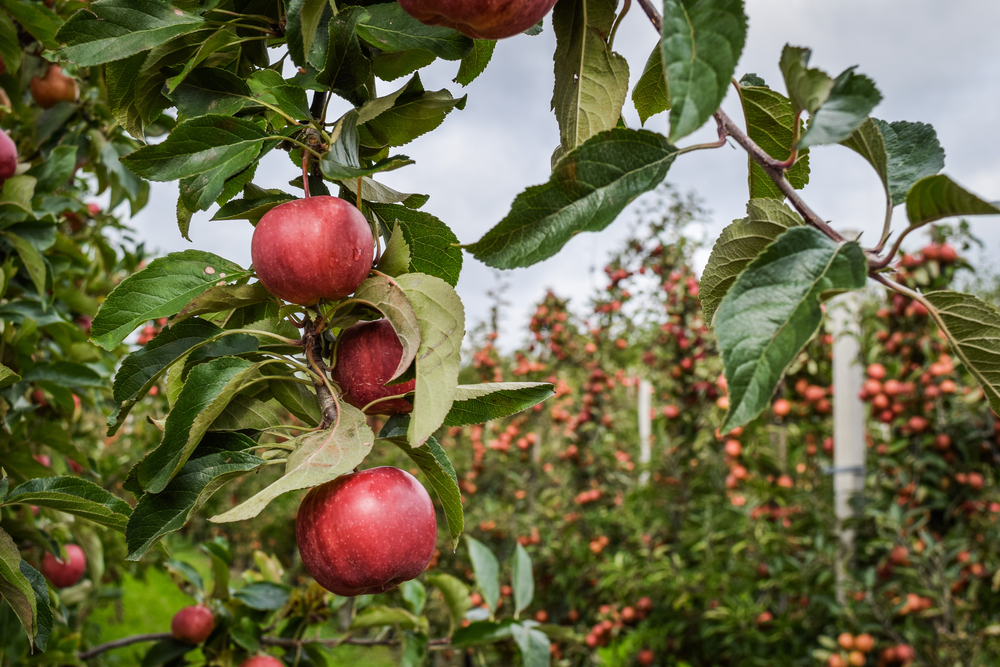Cornwall was once best known for its dairy produce; the reliably wet climate and sometimes poor soil was best for growing grass to feed cattle. But while cream teas and a block of Cornish Yarg are still some of the county’s most iconic products, changes in climate over the past half century have created a shift in farming habits.
Global warming has seen parts of Cornwall experience temperatures above 10°C for more than seven months of the year. Where we were once a ‘temperate’ zone like most of the rest of the UK, Cornwall now has ‘subtropical’ status. This means we are in the enviable position of harvesting different crops throughout the year.
The local wine industry is booming
Perhaps Cornwall’s most visible success story is its burgeoning wine production. In just a few decades it’s gone from an eccentric cottage industry to being granted Protected Designated Origin status, like Stilton cheese or Melton Mowbray pork pies.
Across the county you’ll find major vineyards producing everything from crisp Sauvignon Blanc to sparkling Brut and delicate rosé. The secret of their success is a combination of careful vineyard positioning, rich, fertile soil and plenty of good old fashioned care and attention. Read our guide to Cornish Wine.
Maris Peers, Lady Christls and Gemsons
The milder coastal climate also puts potato farmers at an advantage, with 100,000 tonnes grown each year. Regular sea breezes help to keep fields mostly free of frost and allow farmers to plant their potatoes in January. Spring arrives early here too, and with it comes the UK’s first mainland crop of new potatoes.
You’ll be able to recognise our spuds by their buttery texture, loose skin and a mild, sweet flavour. With more and more people choosing to buy seasonal produce you’ll undoubtedly be seeing many more Maris Peers, Lady Christls and Gemsons on supermarket shelves.
The fruit orchards of Cornwall
Soft fruits like berries don’t always do so well when battered by strong coastal winds, so many fruit farmers prefer to grow harder top fruits like apples, pears, mulberries and medlars. Orchards can usually be found in the deep shelter of valleys like the Camel and Hayle in the north of the county.
One of the most popular uses for the fruit is of course cider which has long played an important part in Cornish culture. After years of declining production, there has been a great revival of local orchards and traditional apple varieties over the past few decades. Just listing memorable names like Pigs Snout, Cornish Gillyflower, Spiced Pippin and Snell’s Glass Apple is enough to evoke a sense of local identity.
From daffodils to phacelia
Visit Cornwall in the spring and early summer and you’ll be greeted with a heart lifting blast of colour. March is yellow with the coming of daffodils, April welcomes the bluebells and in June there is a new colour to add to the palette: purple Phacelia.
Instead of leaving ploughed fields brown and empty, some ingenious farmers have taken to growing Phacelia as ground cover between their cauliflower and broccoli crops. When the flowers rot they act as an environmentally friendly manure that is also manna for local bees and that can only be good news for Cornish honey.
